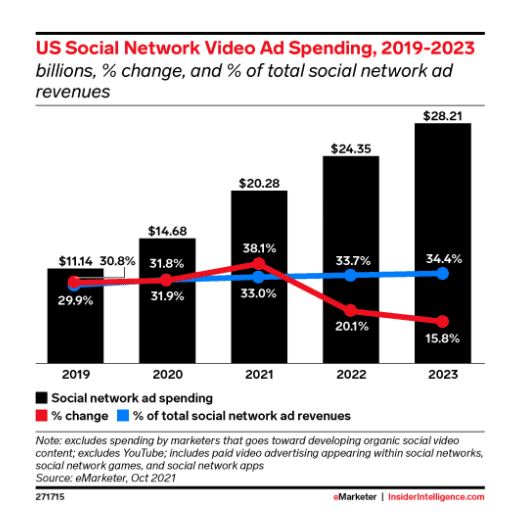
Prime Day is an excellent way to drive incremental traffic and sales by increasing your ad spend. However, it's important to keep in mind that the majority of Prime Day ad sales are on discounted products.
It's important to identify non-deal high-margin products that you can promote, and then advertise them with a significant increase in ad expenditure. This strategy is both long-term and short-term successful.
What is Amazon Prime Sell?
Amazon Prime is a popular way to purchase products online. Over 65% of Amazon Prime members say that they shop regularly at Amazon. This is a great opportunity, for brand owners, to increase their sales by getting products in front these loyal customers.
If you are looking to become an Amazon Prime seller, there are three main paths: Fulfillment By Amazon (FBA), Seller-Fulfilled Prime (SFP), and Vendor Central. Each of these options has its pros, and it's important that you choose the right strategy to suit your business.
FBA is an excellent option for new sellers or brands with large inventories. But it does have some limitations and fees. SFP allows merchants access to Prime orders without having to pay shipping charges and has more control over their inventory. The results can be a significant uptick in sales conversions, which can translate into big profits!
Prime Day Strategy

Amazon Prime Sellers can take advantage of the huge influx of Prime Day shoppers to increase your sales. This can be accomplished through cutting prices, offering coupons, and advertising your products in various ways.
Bundling products is another way to make Prime Day a more competitive day. Customers may save money by bundling related products. They will also be able generate more product review and improve their Amazon search rankings.
To increase repeat business and customer loyalty, you can also profit from Prime Day's opportunity to resell durable or commonly bought consumables.
Advertising is an integral part of your Amazon Prime Day Strategy, but it must not be misused. Your visibility will be increased by increasing your ad budget and bidding for Sponsored Brands. These products are displayed to shoppers who search Amazon.
Prime Day Stats
Prime Day is Amazon's summer version of Black Friday and Cyber Monday, and they've managed to turn the event into a massive sales event that's growing in popularity every year. Amazon will see a significant increase in sales if this happens. Customers will be able to spend more money on Amazon services and products.
In fact, a recent survey by Profitero found that high-inflation categories such as electronics and home goods are the best sellers during Prime Day. The company found that both men and women tend to spend more during prime day sales.

Therefore, it is crucial to ensure that your store is prepared for Prime Day. It is important to offer discounts that can make your store stand out and appeal to customers. To achieve this, you must have a solid product range and be able to attract customers' attention with your marketing.
Prime Day Ads
Amazon Prime Day is the largest single sale of the year, and an excellent opportunity to promote your brand to new customers. Amazon Prime day PPC campaigns are the most popular, with many sellers focusing their entire advertising budgets on it. However, some sellers also use Instagram ads and Facebook to promote their deals.
Amazon Coupons is a key strategy to increase visibility and conversion rates. This provides a discount code for your products that buyers can use to identify the deals they are looking for. This will increase product visibility on every page, even if they're not in the Lightning Deal window.
Amazon has a waiting list for sellers who wish to be Prime Sellers. They monitor your metrics closely during the trial period to ensure you can fulfill all orders. Once you have been approved, you will be able to start shipping your inventory to Amazon's fulfillment centre. Once your approval is granted, you will be allowed to start selling directly to customers on the Seller Store.
FAQ
Do you have any tips or tricks that can help me shop online for less?
Make a list. Go through each item on the list and determine which one is more affordable. Once you have made your decision, compare prices between several websites. Try to find the lowest possible price for each product.
Are there other things that I should know about buying clothes online
Before you buy clothes online, there are many things that you need to know. First, determine your size. It may seem obvious, but most companies don't provide this information so you might have to guess.
Remember to be aware of shipping charges. Shipping fees vary depending on the type of item you order. You should also know where your package is going. Some items ship directly through the manufacturer. Others go through a third-party warehouse. This can affect delivery times.
Finally, read reviews carefully. There are plenty of bad experiences out there. Don't let other people's experiences influence yours.
Why is it important that you make a shopping plan?
A shopping list serves one purpose: to remind you of what you need for grocery shopping. This will save you time and prevent you from running around looking for things you have forgotten. If you're not sure which aisle it's on, a shopping list can make it easier to locate the item.
In addition, a shopping list will save you money. You can save money by having a shopping list.
Do I really need my credit card number to shop online?
Registering for your credit is optional. If you are interested in receiving special offers and discounts, however, it may be worthwhile to register your card. It's a good idea that you verify your identity to your bank.
Statistics
- Last Black Friday, I bought a stove from Lowes at 40% off, receiving 24 months of interest-free financing (from Lowe's). (meetfabric.com)
- Your Online Purchases 79% of Americans purchased goods and services online in 2018, which is expected to exceed 90% in 2023. (meetfabric.com)
- All items on AliExpress have an estimated delivery time on the product page, and it's usually anywhere from 20 to 60 days. (makeuseof.com)
- According to the Federal Trade Commission (FTC), online shopping was the fourth most common fraud category for consumers as of February 2022.5 (thebalance.com)
External Links
How To
How to shop safely online
Online shopping is one the easiest ways to purchase goods and services. But, convenience comes with a cost. Although there are many benefits to shopping online, there are also potential risks. Identity theft is the greatest risk. Identity theft is the most serious risk. Identity thieves will use your personal data (names, addresses, credit cards numbers) to steal your money or take out fraudulent loans. Your stolen information is then sold on the black marketplace. Here are some tips to help you keep your business online safe.
-
Secure websites are recommended. SSL encryption is offered free of charge by many online stores to protect customers’ information. Any information entered on the site, including names and addresses, phone numbers, credit card details, and so forth, is encrypted. This prevents others from seeing what you have entered. When choosing which online store to do business with, ensure they have a valid certificate issued by a recognized CA. When you browse, look for the green padlock icon beside the URL bar.
-
Your password should not be divulged. You will be asked to confirm your email address, username, and password when you sign up for a brand new account. These credentials should not be shared with anyone. You should also not write these credentials down. If someone steals your wallet they can access your accounts. Save them on your computer instead. You should also change your passwords regularly - every three months is recommended.
-
Keep track your orders. Track where you send packages if you're sending items to other people or yourself. Many people fall prey to fraud by believing that they sent something to themselves but it was actually sent to someone else. Before you send anything, always verify the tracking number. Never ship anything without seeing proof of delivery. If you are not satisfied with the service, contact the company immediately.
-
Know who you're dealing with. Many websites will require you to give sensitive information, such as your full name and date of birth, Social Security Number, and Bank Routing number. These details will help identify you, so it is important to be cautious about giving them out. Google "what's the need?" to determine if a website has this information. You'll find many answers.
-
Be wary of pop-up windows. Many websites bombard you with popups advertising special offers and deals. Some of these ads may seem legitimate, but others are designed to trick you into revealing private information. For example, an anti-virus program may ask for your credit card number, bank information, and social insurance numbers. Never click on suspicious links to avoid being tricked.
-
Phishing scams can be dangerous. Phishing scams are where hackers pretend to be reputable companies in order to trick customers into giving their financial information. Phishers will often send emails that appear to come from banks and retailers encouraging customers to log into their accounts and update any information. Once your financial information has been given, hackers can take control of your finances. Hackers have the ability to empty your bank accounts or transfer money between accounts. You have many options for identifying a scam email, including How to Spot Phishing Scams.
-
Do your homework. Be sure to read the fine print before you sign anything. Clear and simple terms and conditions must be included in any contract that you sign. Make sure to read all information and understand exactly what you're agreeing. Avoiding hidden fees and charges is key to saving money.
-
Take the time to shop around. Do not be afraid to shop around. Compare prices from different websites until you find a good deal. You can also compare shipping prices when ordering multiple items. Shipping costs vary depending on the website you use. Fast shipping is worth the extra cost.